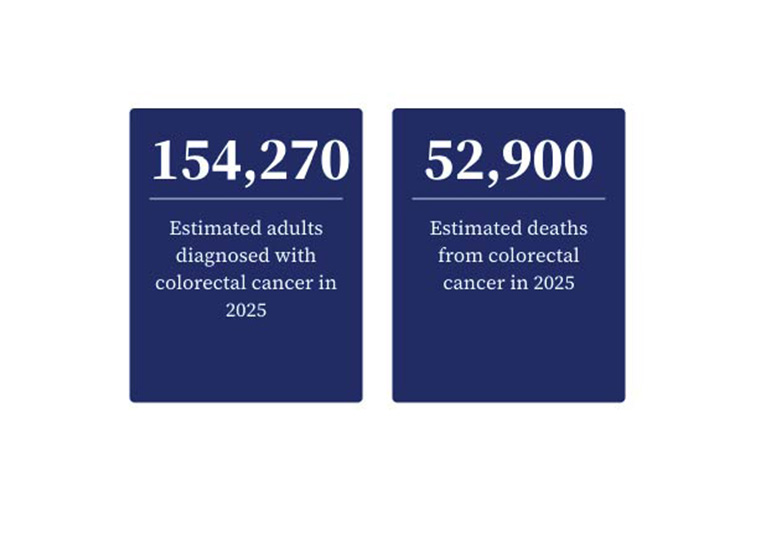At-home test for colorectal cancer delivered with a deadline
Our daily choices are often not the kindest to our future self. The exercise we skip, the less-healthy dietary choices we make, the cigarettes we smoke and even the retirement savings we don’t do — all carry significant risk for our future well-being.
As does the less frequent, but just as consequential, choice to delay or skip preventive health care.
With an estimated 38% of Americans expected to be diagnosed with cancer, being able to take advantage of a screening test would seem like an obvious win to catch any disease sooner rather than later. Yet too few — 68% of whites, 65% of Blacks, 59% of Hispanics and 58% of Asians — are up to date on this periodic preventive test.
A real-word experiment that offered screening to more than 7,700 participants found that giving people a deadline to complete an at-home test for colorectal cancer was an effective nudge that boosted testing rates. Moreover, giving them a short deadline of one week was just as effective as imposing a deadline coupled with a monetary incentive.
A Better FIT for Better Outcomes
Until fairly recently, initial screening for colon cancer presented a slew of hurdles. Subjecting yourself to a bowel cleansing and fasting ahead of a colonoscopy or sigmoidoscopy — both typically involving sedation — can indeed feel like a big personal ask.
The development of an at-home test removed some of those hurdles. The fecal immunochemical test is an at-home test that requires collecting a small stool sample and mailing it in for testing. A FIT test provides an initial noninvasive screening for colon cancer. If a person receives a positive test, they then must undergo a diagnostic procedure such as a colonoscopy. However, if they receive a negative test, they simply need to do the FIT again the following year. Comfort of at-home use, simplicity of the test, and removing the need to travel to the clinic/take a day off work remove some big barriers to screening.
Increasing acceptance of the at-home tests has been the subject of considerable research.
Boosting FIT uptake
A team of researchers launched a field study to explore whether more people would follow through on an at-home FIT test if they were presented with a finite deadline and if an additional financial incentive might further increase uptake.
That team of researchers includes UCLA Anderson’s Alicea Lieberman; UC San Diego’s Ayelet Gneezy; University of Texas Southwestern Medical Center, Fort Worth’s Emily Berry, Stacie Miller and Keith E. Argenbright; John Peter Smith Health Network, Fort Worth’s Mark Koch; and San Diego Veterans Affairs Healthcare System’s Samir Gupta.
The research published in Scientific Reports did not explicitly test whether procrastination is in fact a roadblock, but the team designed their field test to follow findings from previous colorectal screening research “implicating procrastination as a key barrier to FIT completion.”
A control group was mailed the kit and given no deadline or financial incentive. Less than 5% of this group completed the test within three weeks. The completion rate among another group explicitly given a three-week goal was 7.2%.
An even shorter deadline proved to be a more effective nudge. Nearly 10% of people with a one-week deadline and no financial incentive followed through.
A small declining financial incentive coupled with a deadline did not prove to be any more effective than the short deadline with no incentive attached. The 9.1% completion rate of participants offered $10 if they completed the test within one week or $5 if they mailed it in within three weeks, was lower than the 9.7% completion rate for the group with a one-week deadline and no financial incentive.
It took a bigger financial nudge to compel more uptake among this lower-income pool of participants. More than 12% of people offered $20 if they took the test within one week or $10 if they took it within three weeks, completed the test — though the difference between this group and the one-week nonincentivized group was not statistically significantly different.
Keep the Deadlines Short
The researchers took a look at all study participants, regardless of whether they were in the control group or one of the nudge groups with different deadlines/incentives. Across the board among people who completed the test within three weeks, 75% took care of it in week one.
The results of this study suggest that future screening campaigns might embed a short deadline. Either to take an at-home test for colorectal cancer or schedule an in-person test for other preventative care.
It also adds to growing research showing more generally — not just in cancer screening — deadlines are an effective nudge to get past procrastination. If you struggle to make strides with your to-do list, consider adding short-term deliverable dates to see if that nudges you to take better care of you — and future you.
Featured Faculty
-
Alicea Lieberman
Assistant Professor of Marketing
About the Research
Lieberman, A., Gneezy, A., Berry, E., Miller, S., Koch, M., Argenbright, K.E., Gupta, S. (2021). The effect of deadlines on cancer screening completion: a randomized controlled trial. Scientific Reports, 11, 13876. https://doi.org/10.1038/s41598-021-93334-1






